Remodeling or building a home usually means installing baseboards to the bottom area of the wall. But what is the best way to install them? Should you use nails or glue? We've researched the answer to these questions, and in this post, we will answer them for you.
While many contractors use glue to secure baseboards to the wall, you'll typically find that nails are used to secure them most of the time. The main reason is that the nails prevent the board from flexing over time, and they can easily be removed once the board is taken off. In some cases, however, a combination of nails and glue is used to secure the baseboards.
Installing baseboards properly is important to keeping with the aesthetic of the home. Over time, improperly installed trim can warp, bow, and flex, requiring it to be removed and adjusted or replaced completely. Please continue reading to learn more about the methods used to install baseboards.
Should You Glue Or Nail Baseboards?
Attaching trim with glue
When you glue baseboards to the wall, it's important to use high-quality adhesive, or you will find that the trim will begin to slack or pull away from the wall at some point. Adhesives made specifically for construction or wood are recommended. It's also important to place the right amount of glue on the baseboard before applying it to the wall.
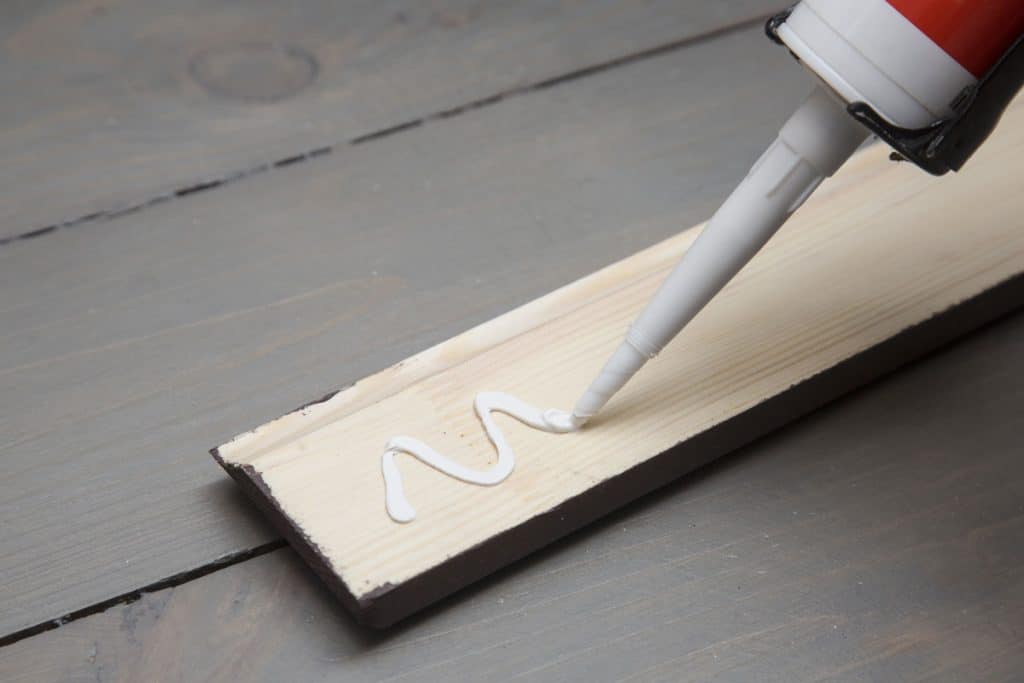
The downside of using glue to attach the baseboard is that it can be difficult to remove, especially if the installer applied too much of it. If the glue is particularly strong, you will often find that sections of the drywall will come off when pulling away from the trim.
Attaching trim with nails
When nails are used to attach the trim to the wall, they are typically applied with a nail gun, though they can be applied using a hammer--a gun is faster, however. The biggest benefit of applying the baseboard this way is that the nails allow little room for the board to flex, and they simply last longer. Applying trim using nails is a fairly simple process, and it can typically be done in a matter of minutes. Lastly, if you need to remove or replace the boards at some point, you can remove them easily if they've been installed with nails.
We sometimes add affiliate links and content that was curated and created by our team with the help of advanced ai tools to help showcase the best design styles.
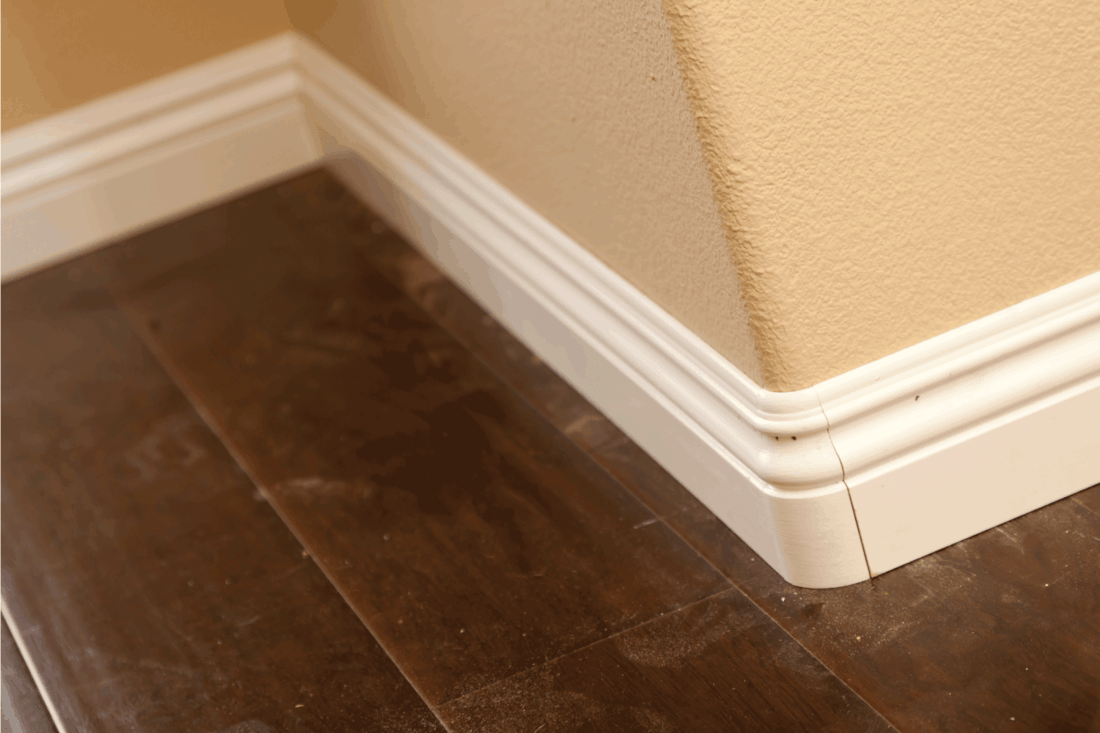
How do you secure baseboards?
Baseboards can be secured to the wall using adhesive or nails. The adhesive is typically applied to the back of the baseboard, and then the board is placed on the wall and held in position for a few minutes until it dries. You can also secure baseboards using a nail gun or opt for the manual method with a handheld hammer and nails.
Before securing the baseboards to the wall, it is imperative to make sure that they are properly fitted to the length and corners of the wall, as removing them after installation can be particularly laborious. It can also cause damage to the wall that may need to be repaired before the baseboards are reinstalled.
Is it better to glue or nail baseboards?

Overall, many home improvement experts will likely say that nailing baseboards is generally the go-to method for attaching them to the wall. However, this doesn't mean that gluing the baseboards doesn't work in certain scenarios. For example, if the baseboard is only three or four inches tall and not that thick, applying glue may be ideal. Or, if the room in which the baseboard will be installed is on the small side, such as a bathroom or small bedroom, the glue may be a good option.
What is the best glue to use for baseboards?
The best glue to use on the baseboard is one made specifically for wood or for construction purposes. Let's take a look at the most popular ones.
Loctite PL Premium Polyurethane Construction Adhesive
This premium construction glue has a polyurethane base and can bind wood, metal, ceramic, stone, and other materials. You can also paint over the adhesive after it dries, which means that you don't have to worry about it leaving stains on the outer surfaces of the wall. This glue is three times as strong as other construction adhesives, and it is also waterproof and weather-resistant. Only a small amount of glue is needed to attach the baseboards to the wall.
Check out more details about this adhesive on Amazon.
Titebond Original Wood Glue
The Titebond wood glue is one of the most popular wood clues in the home improvement marketplace. This glue is made in the US and is solvent-free. It's also non-toxic and provides a very solid and sturdy bond. If you are looking for dependable wood glue for your baseboards, Titebond is definitely one to consider. This glue sands down easily and can be used on most home construction or woodworking projects. You don't have to worry about harmful fumes or long drying times when using this adhesive.
Learn more about this glue on Amazon.
Gorilla Max Strength Clear Construction Adhesive
This maximum strength glue by Gorilla Glue is definitely a top pick when it comes to baseboard installation. It provides the versatility and dependability that the Gorilla Glue brand is known for and dries crystal clear, is waterproof, and can even work outdoors as well. If you need an adhesive that can bond without a long drying time or lingering odor is, here's the one to use. This glue is also perfect for tile, metal, stone, and glass surfaces.
Read more about this glue on Amazon.
What kind of nails do you use for baseboards?
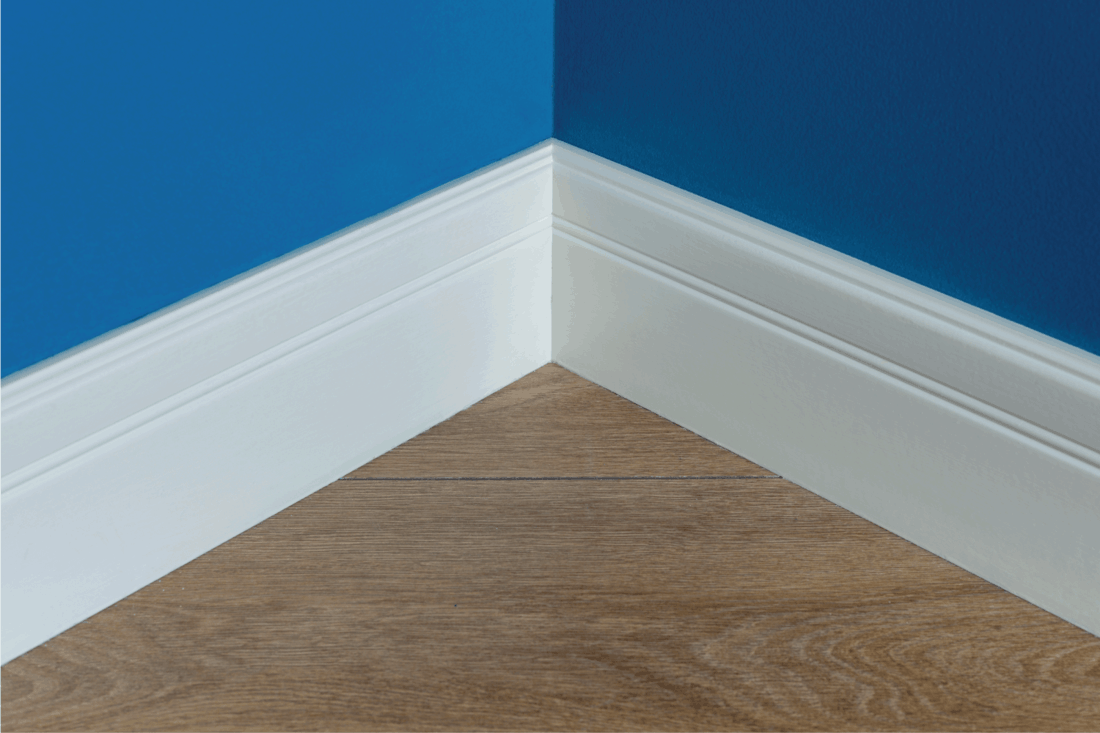
The key to choosing the best nails for baseboards begins with determining the thickness of the baseboard and the length and gauge of the nail needed. For the most part, finish nails are used to attach baseboards to walls. These nails are typically made of either 15 to 16 gauge steel wire and can usually be purchased in packets of 50 or more.
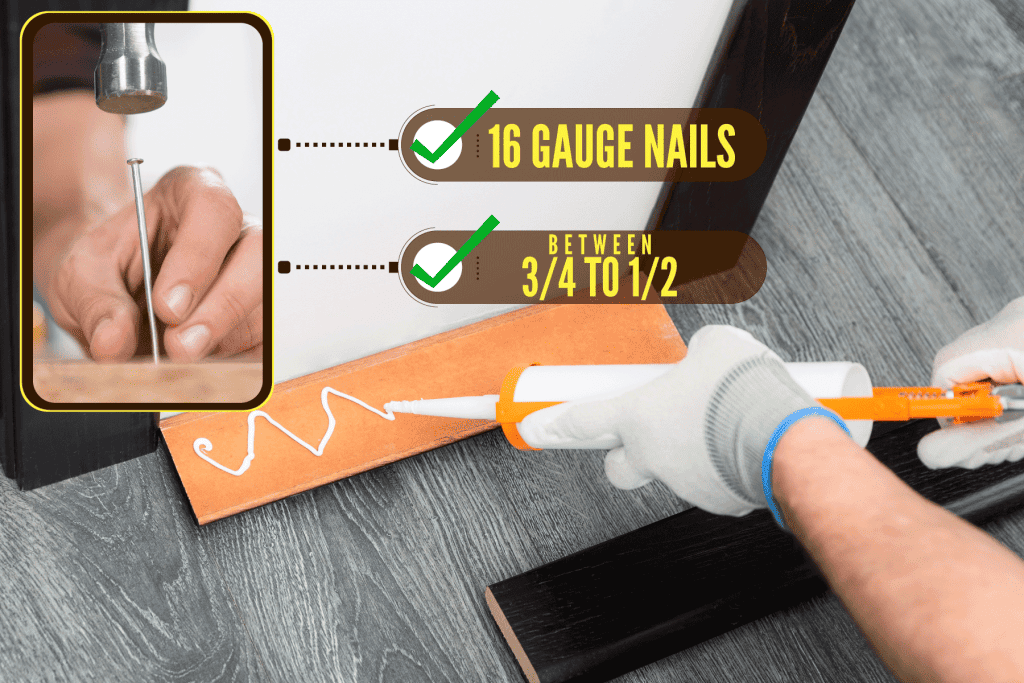
The thickness of these nails allows them to be used in heavy applications such as attaching baseboards, cabinets, and other interior wood-based structures. It's best to use a 16 gauge nail for baseboards between 3/4 to 1/2 inches thick, and these nails are typically 1-1/2 to 2 inches in length. You'll want to use an 18-gauge finish nail for thinner baseboards, however.
Take a look at these finish nails on Amazon.
Where do you nail baseboards?
The baseboard should be nailed to the bottom portion of the wall. If the room is carpeted, it's important to make sure that the baseboard is touching the floor, so there should be no gap between the carpet and the wall. If you are using nails to attach the baseboard, the nails should be spaced about 12 to 14 inches apart so that the board does not flex or bow over time.
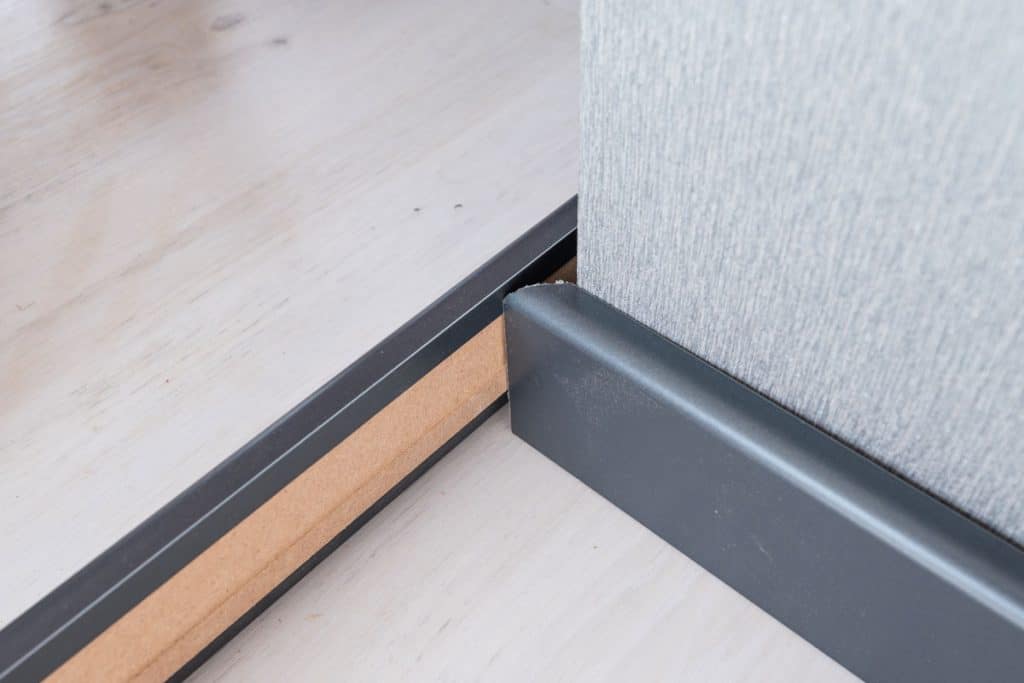
The height of the baseboard will determine how many nails you need. For example, if you have a four inch tall baseboard, you will want to place two nails about two inches apart at 12 to 14-inch intervals along the length of the baseboard.
How to nail baseboards with a hammer
Before installing your baseboards using nails, you'll first need to ensure that you have the right gauge and nail length for the job. More often than not, this would be a 1-1/2 inch nail with a gauge of anywhere from 15 to 18. Let's take a look at the steps involved in nailing the baseboard to the wall.
- First, start by placing the baseboard against the wall bottom. Ensure that it's lined up evenly and starts at the end of the wall or the corner.
- Next, position a finish nail at the middle of the trim a couple of inches from the end. Be sure to hold the nail so that it's almost perpendicular to the floor. Next, take your hammer and drive the nail into the baseboard. Be sure to tap gently first, as not to split the baseboard.
- Once the first nail is in, apply additional nails about every 12 inches along the length of the baseboard. If the baseboard is four inches or thicker, you'll want to place two sets of nails every 12 or so inches so that the board does not lean.
Check out this hammer on Amazon.
Wrapping Things Up
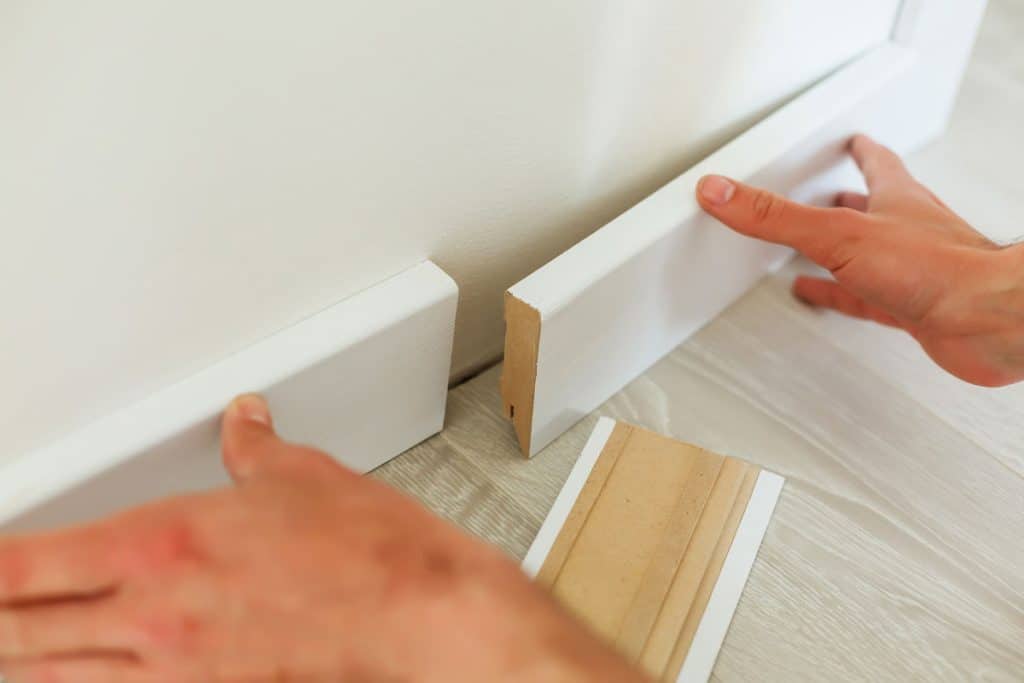
Overall, the quickest and easiest way to install baseboards to a wall is to use finish nails. With proper planning and the right tools, you can install the baseboards relatively quickly, and the good thing is that there is no sticky mess to clean up afterward. We hope that this post has been helpful, and please be sure to check out our other post before you go.
Can You Use A Bissell Crosswave On Vinyl Or Laminate Flooring?
What Is The Best Tile Floor For A Porch?






